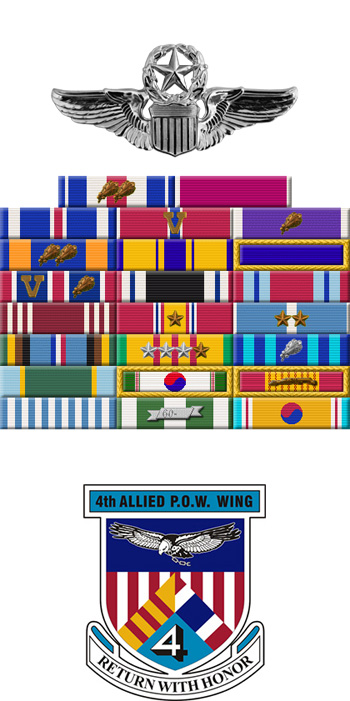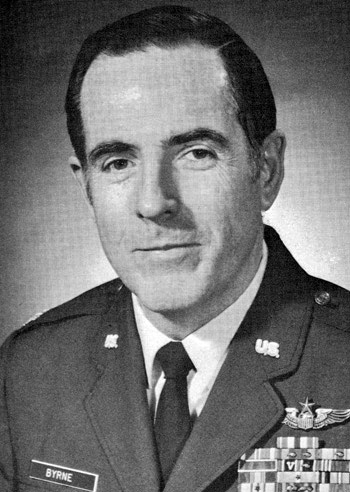
|
Ronald E. Byrne, Jr. |
 |
|||
| Rank, Service | ||||
Colonel O-6, U.S. Air Force |
||||
| Veteran of: | ||||
|
||||
| Tribute: | ||||
Ron Byrne was born in 1928 in Brooklyn, New York. Ron entered the U.S. Merchant Marine Academy on July 2, 1946, and left the academy on May 4, 1950. He then enlisted in the Aviation Cadet Program of the U.S. Air Force on March 20, 1951, and was commissioned a 2d Lt and awarded his pilot wings at Williams AFB, Arizona, on June 21, 1952. After attending F-86 Sabre Combat Crew Training at Nellis AFB, Nevada, Lt Byrne was assigned to the 39th Fighter Interceptor Squadron in South Korea from December 1952 to November 1953, during which time he flew 75 combat missions. His next assignment was as a maintenance officer with the 3642nd Maintenance Squadron at Laredo AFB, Texas, from November 1953 to November 1955, followed by maintenance officer training at Chanute AFB, Illinois, from November 1955 to August 1956. He served as a flight test maintenance officer with the 323rd Field Maintenance Squadron at Bunker Hill AFB, Indiana, from August 1956 to July 1957, and then served as a maintenance officer with the 401st Tactical Fighter Wing at England AFB, Louisiana, from July 1957 to September 1959. During this time he deployed with the Wing to Aviano Air Base, Italy, in the F-100 Super Sabre from November 1958 to May 1959. Capt Byrne next received an Air Force Institute of Technology assignment to Oklahoma State University to complete his degree in Mechanical Engineering from September 1959 to February 1961, followed by service as a project officer with the Titan Missile Program Office in Los Angeles, California, from February 1961 to February 1964. After attending F-105 Thunderchief Combat Crew Training, Maj Byrne was assigned to the 67th Tactical Fighter Squadron at Kadena AB, Okinawa, in March 1964, deploying twice to Korat Royal Thai AFB, Thailand, for combat operations in Southeast Asia. He was forced to eject over North Vietnam and was taken as a Prisoner of War on August 29, 1965. After spending 2,725 days in captivity, Col Byrne was released during Operation Homecoming on February 12, 1973, and then was briefly hospitalized to recover from his injuries at Wright Patterson AFB, Ohio. He then attended Air War College at Maxwell AFB, Alabama, from August 1973 to June 1974, and then served as Program Manager for the Joint Tactical Information Systems and then as Director of Advanced Plans with Air Force Systems Command at Hanscom AFB, Massachusetts, from June 1974 until his retirement from the Air Force on October 1, 1977. |
||||
|
||||

